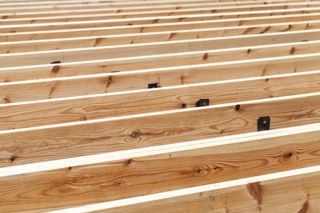Timber upper floors can be divided into two types single and double.
Construction process of suspended timber upper floor.
5 2 7 construction of suspended concrete ground floors.
Construction studies drawing detail of suspended timber floor.
5 2 8 transfer of loads.
The method and type of fixings used to secure the floor deck to the top of the joists also needs to be considered.
Concrete floor slab construction process includes erection of formwork placement of reinforcement pouring compacting and finishing concrete and lastly removal of formwork and curing of concrete slab.
We explain how hollow or suspended floors are made and what the key building regulations that affect them are.
Double floors are those that have their joists supported by beams between the supports at their ends.
Prepare and place reinforcement for slab3.
This creates a small gap and allows ventilation and air movement to prevent damp forming in the timber joists.
Single floors are those that have their joists spanning from one wall to the other without any intermediate support.
What materials are used in beam and joist floors.
Whether building a ground floor suspended timber floor or a first floor hollow floor we explain the different options and techniques that you can use in its construction.
Timber and concrete upper floors.
Pour compact and finishing concrete floor slab4.
Noggings may be required at the top flange along the wall to support the floor decking and at the bottom flange to support the plasterboard ceiling.
The material most commonly used for residential floors using beams and joists is timber although steel frame homes are becoming increasingly popular.
Contents concrete floor slab construction process1.
Building and understanding a suspended or hollow timber floor.
These subfloors do not have the solidness of a concrete slab but offer a wide variety of potential floor covering options including floorboards.
Suspended timber ground floors consist of the finished timber floorboards being attached to floor joists which are suspended above the subfloor of the foundation.
On top of that the natural drying process of the intermediate floor once heating has been applied might reduce moisture content from anywhere between 12 14 at the time of construction down to 8 10 when fully dried.
These floor joists are raised above the subfloor on small supporting walls called tassel walls or sleeper walls.
In recent years the use of suspended concrete floors has become common place normally in the commercial sector but to a lesser degree even in upper floors of domestic dwellings.
So we will discuss concrete or timber floor systems.

